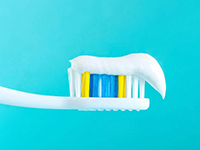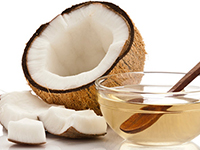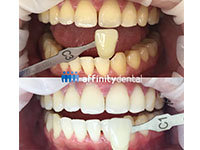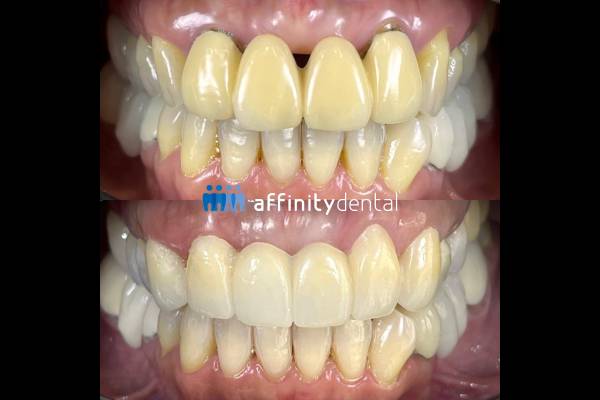Teeth Whitening 101: Your guide to a brighter smile
Whether your teeth was whitened by a professional in a clinic, by a special promotion of travelling dental caravans, or do-it-yourself treatment, proper care must be observed to preserve the glamour of those pearly whites.

1. What food do you recommend to improve dental health?
Any food that contain an enzyme called malic acid can whiten the teeth as well as using baking soda. Eating tart fruits such as oranges and pineapples may cause the mouth to produce more saliva, which washes teeth and clean naturally. Dairy products that contain lactic acid, fight against tooth decay.

2. What food do you recommend that people avoid?
Foods that are both sticky and sugary are bad for the teeth. That’s because when foods are sticky, they tend to “stick” around and stay on the teeth longer, which gives a greater chance for bacteria to multiply and destroy the teeth. Acidic drinks like sodas or any carbonated drinks are also promoting tooth decay. Coffee and tea can also dry the mouth and can lead to staining.

3. Do whitening strips truly work? Why or why not?
Whitening strips are over the counter whitening products which are also inexpensive and effective as long as you follow the manufacturer’s advice. There’s no doubt that they can work well, and are certainly a better option than a random tooth-whitening kit of dubious origins bought online.

4. What are whitening treatments that can be done?
There are many ways to whiten teeth. Whitening toothpastes, over-the-counter gels, rinses, strips, trays, and whitening products obtained from a dentist. Whitening toothpastes can help remove surface stains only. Whitening gels are clear, peroxide-based gels applied with a small brush directly to the surface of your teeth. Instructions vary depending on the strength of the peroxide. Whitening strips are very thin, virtually invisible strips that are coated with a peroxide-based whitening gel. Whitening mouth rinses also help to freshen breath and avoid gum disease. And lastly is the laser teeth whitening done in the dental office at the chairside with chemicals containing carbamide peroxide or hydrogen peroxide that helps lighten the color deep in the tooth and make your teeth three to eight shades lighter.

5. Are there recommended type of toothpaste for different types of teeth?
Antidecay toothpaste contains Sodium Fluoride (NaF) Stannous Fluoride (SnF2), or Monofluorophosphate (MFP2 which are very effective in fighting tooth decay. Desensitizing toothpastes are very effective for sensitive teeth. There are many brands of desensitizing toothpaste available in the market which vary on the active ingredients they contain. People who smoke often suffer stained teeth because of tar deposits and smokers toothpaste are also available in the market. Some smoker toothpastes use stronger abrasives to remove these stains. Vigorous brushing with more abrasive pastes may damage the enamel over time. Whitening toothpaste are used to lighten teeth shade containing fluoride and enzyme content.

6. What are natural ways to remove stains on teeth?
Coconut oil is also high in lauric acid, which is known for its ability to reduce inflammation and kill bacteria. Unlike many other tooth whitening methods, coconut oil pulling does not expose your teeth to acid or other ingredients that erode the enamel. Baking soda is also a natural way for stain removal. To use this remedy, mix 1 teaspoon of baking soda with 2 teaspoons of water and brush your teeth with the paste. Also limit coffee and tea intake will lessen the stain accummulation on teeth. Eating fruits such as pineapple, and strawberry may help exfoliate your teeth and make them appear whiter, they are unlikely to penetrate the stains on your teeth.

7. Can teeth whitening procedures be bad for your teeth? Why or why not?
Everything in excess is bad. You can never overdue whitening treatment. There is an interval of 6-12-18 months after each teeth whitening sessions. Overdoing it with the DIY strips can also wear away the outer shell of the tooth, known as enamel. The higher the percentage of peroxide in the whitening solution, the shorter it should be applied to the teeth. Too much bleaching can result to destruction of enamel which may lead to tooth sensitivity.

8. How does teeth whitening works? What happens to teeth?
Teeth whitening can be achieved by either changing the intrinsic color or by removing and controlling the formation of extrinsic stains. Hydrogen and Carbamide Peroxide are the active ingredients for teeth bleaching. Oxygen molecules from the whitening agent react with the discolored molecules in your teeth, breaking the bonds that hold them together. The oxygen molecules spread, whitening the entire tooth. As a result, you are left with a brighter, whiter smile. Dietary intake of tannin-rich foods, poor tooth brushing technique, tobacco products, and exposure to iron salts and chlorhexidine can affect the colour of a tooth.

DISCOVER YOUR OPTIONS. VISIT US TODAY!
Clinics
Makati
2F, Plaza One Hundred, 100 V.A. Rufino St., Legaspi Village, Makati City
(02) 8823-5571
(+63) 917-584-6852
makati@affinitydentalclinics.com
BGC Stop Over
2F, Bonifacio Stopover Building, 32nd Street corner Rizal Drive, Bonifacio Global City, 1634 Taguig
BGC High Street
4th Floor One Bonifacio High Street Mall, 5th Ave, Taguig, 1635 Metro Manila
Alabang
Unit 206, 2nd Floor, Westgate Hub Mall, Filinvest Corporate City, Alabang-Zapote Road, Muntinlupa City
Cebu
G/F Stall 110, EBlock Tower 2, IT Park, Salinas Drive Lahug, Cebu City
Ortigas
3rd Floor, East Wing, Estancia Mall, Capitol Commons, Meralco Avenue, Ortigas Center, Pasig City
(02) 8248-1292
(+63) 917-632-1128
(+63) 917-632-1128

Follow us on Social Media
Copyright 2018, Affinity Dental Clinics. All Rights Reserved.




